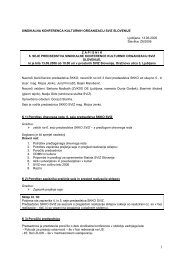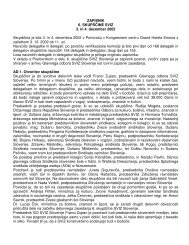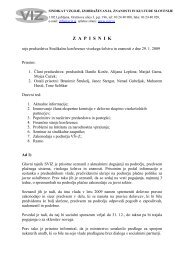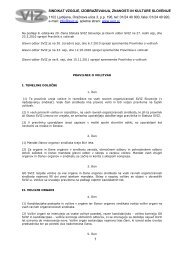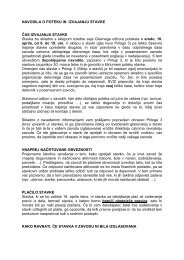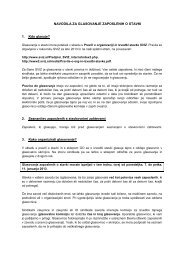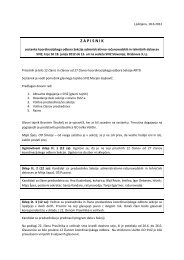Create successful ePaper yourself
Turn your PDF publications into a flip-book with our unique Google optimized e-Paper software.
Derek Hynd about Musica Surfica<br />
Surfers tend to push limits. They feel they are cocooned within the ocean<br />
against its formidable power.<br />
No matter the size of wave, strength of wind or time of day, the surfer seems to<br />
welcome the lull before peril. A form of madness takes precedence over logic.<br />
One Sunday afternoon on the island of Tasmania, at the edge of the far<br />
reaches of the southern world, “am Ende der Welt”, (which was from the<br />
1830’s the principal penal colony in Australia), the artist Jon Frank, whose<br />
cinematographic work is featured here in Maribor put out from safe harbour<br />
in a tiny little runabout boat.<br />
The sky was a steely grey and the wind calm (the lull before the peril) as he set<br />
out on a spur of the moment unaccompanied passage. One hour later he had<br />
arrived at the infamous Shipstern Bluff to the north east of Hobart’s Storm Bay.<br />
His mission was to view the massively open ‘tubing’ waves. From 50 metres<br />
away the vision was awe-inspiring. But soon after arriving the wind began<br />
to howl and the colossal waves turned to heaving chaos. The way back was<br />
a different matter. As he set his boat around for the return journey, elation<br />
turned to gallow’s humor as he faced distorted 20 foot seas with a feeble 12<br />
horse power motor attached to a coffin sized open boat, close to darkness<br />
and facing a good hour or more of potential capsize or stall before trying<br />
to navigate one of the most treacherous bluffs on Earth. Cresting another<br />
vertical wall of water, the intrepid Frank pondered the inevitable question:<br />
What possessed him to take a look at one of the heaviest waves in the world<br />
from close quarters, in a veritable bottle cap, without telling a soul?<br />
Events such as the late afternoon suicidal surf check are normal for the artist<br />
in Frank. Invoking dark wonders of the surfing experience, he lives for<br />
proximity to the angry sea.<br />
He didn’t film this particular event. To hold a camera and live would have<br />
been impossible. To be a voyeur to his own undoing, knowing the ocean<br />
would have swallowed the evidence would have been the poet’s ultimate<br />
ascetic statement.<br />
Jack McCoy is more measured, though just as driven. Another collaborator of<br />
Tognetti’s, the 60 year old continues to define the art of underwater cinematography<br />
in a manner few peers would attempt. Having filmed the greatest<br />
ride of all time at the deadly Tahitian location ‘End of The Road’ from the<br />
safety of a boat, he now trolls beneath the wave on the reef floor, running<br />
next to the ‘tube’ holding on to a submersible James Bond like machine<br />
travelling at 12 knots per hour.<br />
Why? Despite the risk of being sucked through the vortex to a rather certain<br />
demise, the vision is like nothing ever seen before in any artistic form.<br />
Tognetti obviously finds release in the ocean, albeit in less challenging manner.<br />
Simply, he must surf. A considerable schedule is rendered relatively easy<br />
by seeking out and riding waves. Whilst perhaps fortunate not to be in the<br />
PROGRAM / PROGRAM<br />
49




